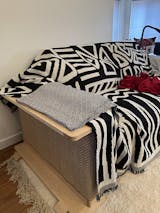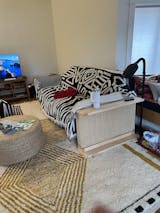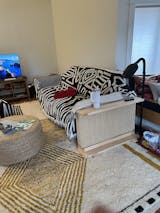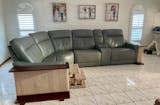You know your cat better than anyone, their unique habits, what makes them happy, and what they avoid. Like many cat owners, you’ve probably tried different scratching options: posts, mats with different textures, or even a cat tree.
But sometimes, you bring home a brand-new scratcher (maybe even sprinkled with catnip), and your cat couldn’t care less. Why does this happen?
Understanding your cat’s style makes all the difference. It not only protects your furniture but also makes scratching posts more appealing.
Why Do Cats Scratch?
Scratching is one of the most natural and sometimes frustrating behaviors cats have. While the cat’s scratching behavior keeps claws healthy, it also fulfills many important needs for your cat's well-being and joy.
- Keeps Claws Healthy: Scratching removes the old, dead outer layer of nails, as this keeps claws sharp, strong, and ready for play or climbing.
-
Marks Territory: Cats have scent glands in their paws. When they scratch, they leave behind both a visual mark and a scent, claiming that spot as “theirs”.
- Provides Exercise and Stress Relief: Stretching up on a post or digging into a mat gives cats a full-body workout. It also helps them release energy and can reduce stress or boredom.
Understanding Your Cat's Scratching Style

Not all cats scratch the same way. Knowing your cat’s style makes it easier to pick the right scratching surface:
Horizontal Scratchers:
- Prefer rugs, mats, or cardboard boxes.
- Best options: flat or curved pads, ideally double-sided for longer use.
-
Bonus: add catnip for extra fun.
Vertical Scratchers:
- Scratch sofas, chair arms, or doorframes.
- Best options: tall posts, Cat-e-Corner scratchers, or cat trees.
-
Tip: Make sure it’s tall enough for a full stretch.
Texture Lovers:
Some cats care less about direction and more about feel. The most satisfying textures are coarse and durable.
- Top material: natural sisal fiber, which is long-lasting and safe for claws.
At Hilde & Phill, our scratchers feature natural sisal mats with Velcro strips, so you can swap them out easily when worn.
Top 4 Tips to Encourage Healthy Scratching

- Offer variety: Try both vertical and horizontal options.
- Redirect gently: If your cat scratches furniture, redirect them to their cat scratcher and reward them for using it.
- Trim nails regularly: Either at home or by your vet.
- Play every day: Active cats are less likely to scratch out of boredom.
The Best Cat Scratchers Online
Choosing a sturdy, cat-friendly scratcher protects your furniture and keeps your cat happy. Durable materials like sisal fiber not only satisfy your cat’s instincts but also last longer, making them a smart choice for you, too.
#1 Soft - A softest feel for sensitive paws
Soft Stripe

#2 Medium - A balance of soft feel and rugged durability
Pure Weave

Birdseye Weave

Ziggy Weave

#3 Coarse - The most durable natural fiber mat
Ivory Stitch

If you found this helpful, you might also enjoy reading our articles on:
- Ways to Redirect Your Cat's Scratching Behavior
- Training Your Cat or Kitten to Use The Cat-e-Corner
- The Best Sofa Protector for Cats










